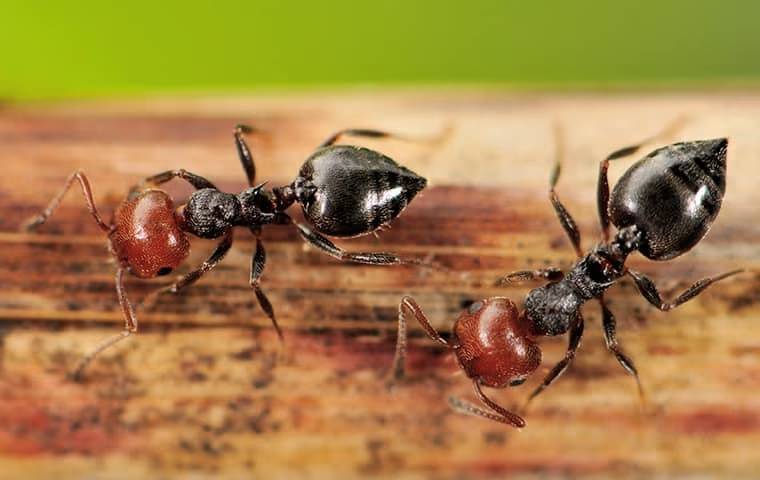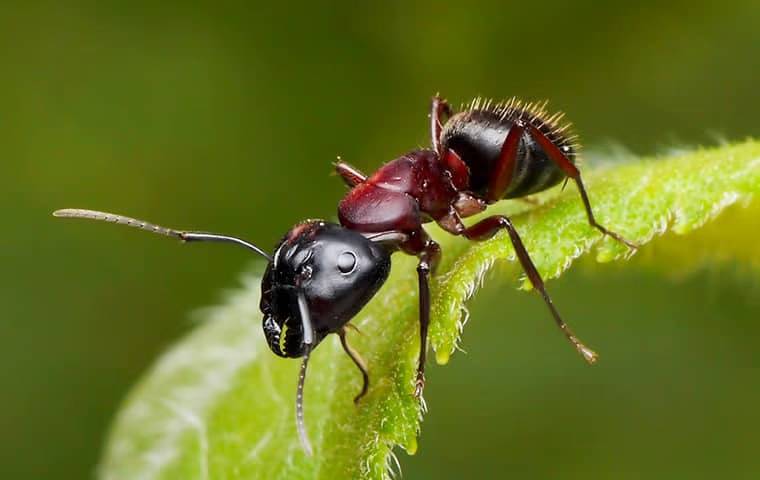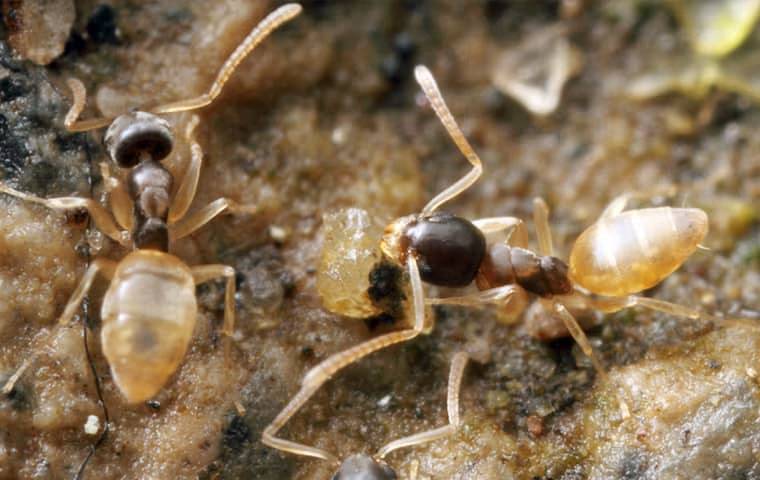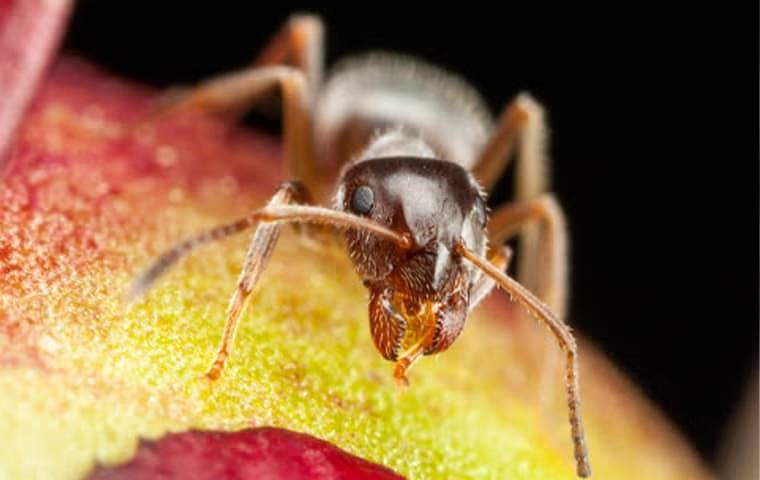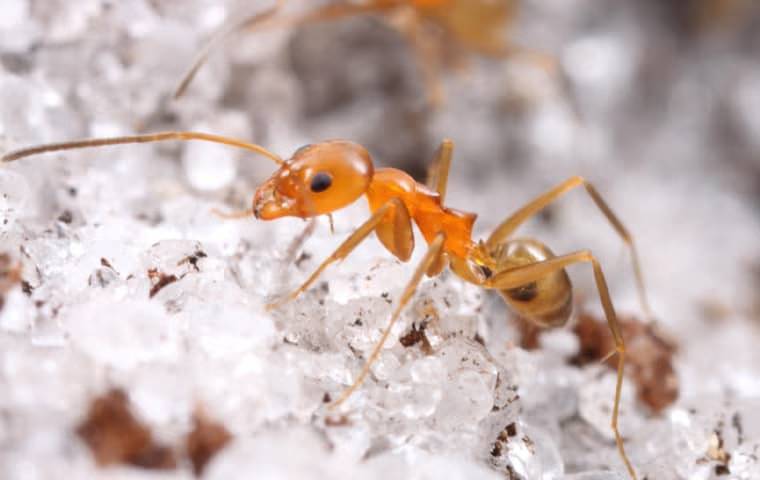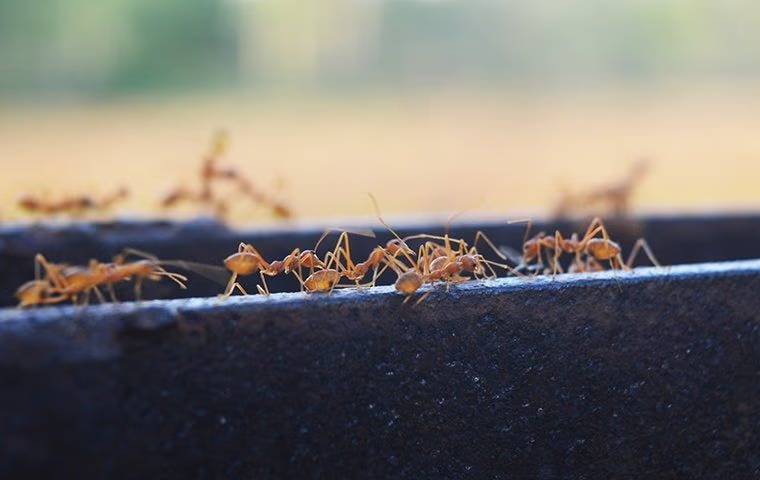Ants In South Florida
Ant Identification
Ants are the most common pest in South Florida. Of all the species known to invade homes ghost ants and bigheaded ants are the most common intruders in Palm Beach, Broward, and Miami-Dade counties.
Each species has unique behavior and unique nutritional needs. Understanding the unique biology of every ant species that infest South Florida homes is crucial to successfully eliminate them from your property.
Only a professional South Florida pest control company like GOTBUGSIKILL has the knowledge and tools to treat your home. Our treatment protocols will eradicate the entire colony and prevent them from coming back.
There are over 12,000 ant species worldwide but only 9 species are considered pests in South Florida.
How do I keep ants out of my home?
There are some things homeowners can do to that will help to keep ants away from your South Florida home. The following list will guide you through some of the steps:
- Seal cracks around windows and the foundation with caulk.
- Place weatherstripping around windows or doors. Install door sweeps.
- Seal gaps around pipes or utility lines entering your home.
- Seal pavers in patio with paver sealant.
- Inspect that screen vents and soffits are not missing or damaged.
- Trim back tree branches touching the exterior walls.
- Remove vegetation adjacent to the home.
- Build a 12-inch barrier between the grass and your home foundation with stones.
- Replace organic mulch with inorganic mulch: rocks, crushed gravel, pebbles, rubber mulch, pumice stone, marble chips.
- Eliminate moisture sources
- Repair leaky pipes
- Broken irrigation systems
- Water meter boxes
- Clogged rain gutter
- Extend AC condensate drain line away from foundation
- Keep trash cans and recycling bins clean. Remove trash daily.
- Make sure trash cans and compost bins have tight-fitting lids.
- Sweep, mop, and vacuum floors regularly.
- Avoid leaving dishes dirty overnight.
- Wipe down counters and clean up any spills.
- Store foods in airtight containers.
- Avoid eating food in the bedrooms
- Keep firewood off the ground and away from your home.
How do I get rid of ants?
Getting rid of ants without the help of a pest control professional is difficult. Ants are tiny creatures, and they will find a way inside your home for shelter and to forage for food.
If you still find ants after following the guide above, it is time to call the pros at GOTBUGSIKILL. We will design a unique treatment plan specific to your situation.
Our technicians are trained to handle every ant species in South Florida. We will use a combination of non-repellent insecticide sprays and gel baits in key areas of the home which will prevent budding. As the ants cross the treated barriers, they will unknowingly carry the active ingredients back to the nest. In 24 to 48 hours the queen and every worker will die.
What is ant budding?
Ant budding is a natural process in some ant species. Ants expand by swarming and budding. During swarming winged reproductives, often called alates, leave their colony to mate during flight. The inseminated queen then finds a place to nest.
During budding a queen and a few workers split to start a new colony elsewhere. Ant colonies bud to expand and to avoid overcrowding the original nest. Budding can also happen when the colony is under distress from environmental pressures such as food scarcity or severe heat.
Another way to distress ants is with the use of repellent insecticides. When repellent insecticides are applied it promotes budding. In order to avoid the sprays, the ants split off and begin a new colony in another part of the structure. Most over the counter DIY pest control products are repellents. When homeowners use these products repeatedly, they run the risk of ants budding and creating multiple colonies.
When it comes to ant control it is best to hire a professional pest control company. When dealing with ants, GOTBUGSIKILL technicians are trained to utilize non-repellents sprays and gel baits. This prevents budding and disseminates the entire colony.
What do ants look like?
Ants below to the order Hymenoptera, same as a wasps and bees. Hymenoptera means membranous wing. All ants belong to the family Formicidae.
Key characteristics of order Hymenoptera:
- Chewing mouthparts
- Complete metamorphosis
- Two pair of wings (except worker ants)
- Front wings larger than hind pair
- Constricted waist, pinched abdomen
Ants are social insects that live in colonies. Ant colonies consist of the queen and the workers. The primary function of the queen is to lay eggs. Workers do everything else in the colony: gather food, care for the young, and expand the nest.
What is the life cycle of ants?
Ants go through four life stages and therefore have complete metamorphosis: eggs, larva, pupa, and adult. The time to complete a life cycle varies according to species and environmental factors such as temperature and food abundance.
Ants have three casts: queens, males, and workers. The queens are fertile egg-producing females, while the workers are infertile females. The queens are winged during the mating flight. After mating the queen sheds her wings and searches for a place to nest. Inseminated queens store enough sperm to last a lifetime. Males die shortly after mating.
How do ants communicate with each other?
Unlike humans, ants are unable to talk to each other. Instead, ants communicate by scent, touch, body language, and sound.
The ant antenna is the key organ that allow them to communicate with one another in the colony. Ants have chemoreceptors on the antennae that pick up chemical signals known as pheromones. Slight variations in the chemical structure of the scent are used to communicate and organize the colony.
Ants have specialized glands on the abdomen that secrete these chemical scents. Each species has unique scents which they use to distinguish other ant species, such as possible aggressors.
Pheromones are also used to locate food. When a forager finds something good, she goes back to the colony to recruit more workers. As the forager runs back to the colony, she leaves a scent of pheromones. When the workers meet, they rub their antennas. The forager then shares specific information about the food source with many workers. Very soon a trail of ants is formed from the food source to the nest, every member guided by the pheromone trail.
What do ants eat?
Ants are omnivores and feed on a wide variety of foods including plant base, animal matter, and other arthropods. The nutritional needs of ants changes during the course of the season. When the queen lays many eggs during the spring and early summer, she requires large amount of protein for the development of the larvae. The foragers usually bring back dead or alive insects to satisfy the protein need.
As the colony matures in late summer and fall the nutritional needs shift to carbohydrates. In nature, ants feed on honeydew excreted by aphids, mealybugs, and scales. This rich sugary byproduct of plant sucking insects give ants the energy to expand the colony.
Foragers bring liquid foods and share it with other members in the nest via trophallaxis. Liquid food stored in the crop, a kind of social stomach, is regurgitated and shared with other workers, the queen, and the larvae.
Adults are unable to ingest hard solid food particles. The foragers bring these food items to the colony and feed the larvae that is capable to ingest solids. The workers then stimulate the larvae to regurgitate the food and share within the colony.
What are ants attracted to?
Ants are attracted to places where there is sufficient moisture, provides shelter, and have food source close by. In nature potential harborage sites that trap moisture include stones, wood, mulch, root system of trees, and dense vegetation.
When ants invade our homes, it is because they have found a suitable place to harborage such as wall voids, attics, overflowing gutters, leaking faucets, irrigation systems, etc.
How do you keep ants out the yard?
In order to keep ants out of the yard you need to remove the conductive conditions that attracted the ants to the yard in the first place.
Here are some steps you can take to keep ants out of the yard
- Inspect irrigation system for broken pipes or sprinklers
- Monitor irrigation cycles and avoid overwatering
- Mow grass frequently
- Prune trees and trim shrubs to improve air flow
- Keep aphids and other plant sucking insects under control
- Remove yard debris
- Replace organic mulch with pebbles, rocks, marble chips
Do ants carry diseases?
Yes, ants are known to carry disease-causing organisms such as E. coli and Salmonella.
People typically think of roaches, rodents, and birds as carriers of pathogenic bacteria. In the case of vector-borne diseases we associate mosquitoes and other blood sucking insects.
As a society, we are not concerned with ants transmitting diseases. Just because there is no concern it doesn’t mean that we should ignore the fact that ants can transmit microbes.
While foraging, ants cross over many surfaces between the food source and the nest. Ants will take the shortest path possible between point A and point B. During this journey they may inadvertently walk over contaminated surfaces such as toilets, garbage, drains, and dirty floors. The ants then bring these pathogens to food preparation areas and food utensil. Ghost ants, for example, are attracted to certain sugars in toothpastes. If the ants crawl around the toilet before getting to your toothpaste you could potentially get sick with the pathogens living on those unsanitary places.
In hospitals, pharaoh ants are known to transmit several pathogenic bacteria as they feed on blood and other bodily fluids from patient’s wounds.
Do ants bite or sting?
Anytime a nest is disturbed workers come out ready to defend the colony. Fortunately, most ant species are only able to bite. During a bite the ants use their mandible to pinch the human skin.
The most feared of all ants is the red imported fire ant because they do both, bite and sting. Fire ants grab the skin with the mandibles and use it as leverage to insert the stinger multiple times. The venom injected by the ovipositor causes irritation and burning sensation.
Fire ant bites/stings are life-threating to a small percentage of the population (less than 1%). Certain proteins in the venom can cause anaphylactic shock, a severe allergic reaction that can be deadly without intervention. In response to the sting the body releases a flood of chemicals that cause you to go into shock. An injection of epinephrine is required to halt this event.
